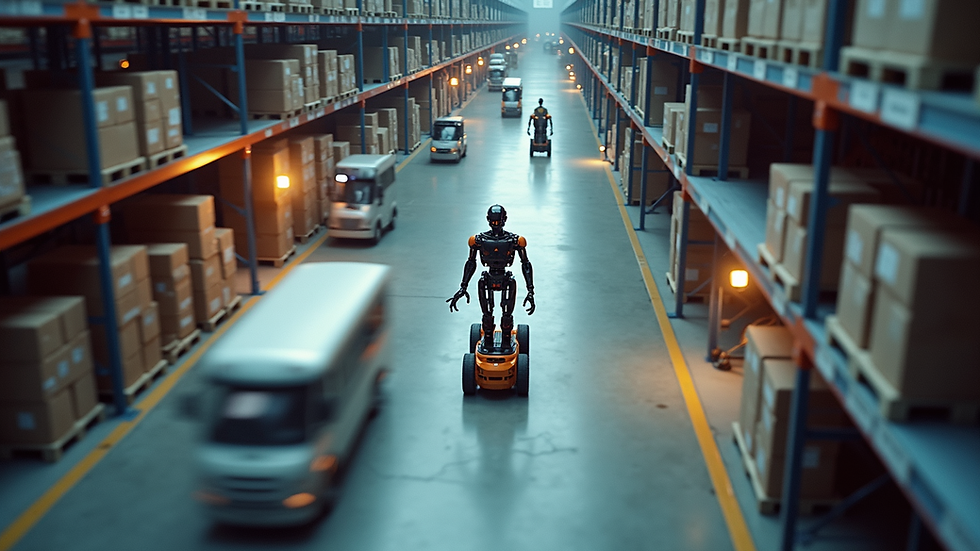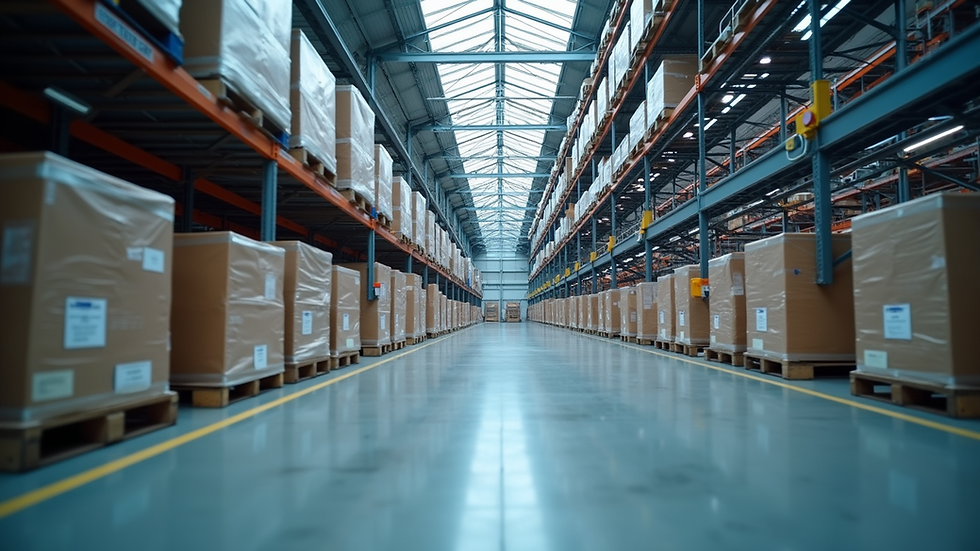Top 5 Warehouse Transport News in Australia for Week Ending July 29 2025
- Priority Recruitment
- Jul 29
- 3 min read
The warehouse transport industry in Australia is experiencing a vibrant phase of change and innovation. As we near the end of July 2025, several developments have emerged that could significantly impact logistics, operations, and strategies in the sector. This blog explores the top five news stories making waves this week in Australia’s warehouse transport scene.
Increase in Automation Adoption
A leading Australian logistics provider recently announced an ambitious plan to automate 50% of its warehouse operations by 2027. This decision arises from soaring labor costs, which have increased by 15% over the past three years, alongside a growing demand for efficiency in supply chain management.
The automation strategy encompasses integrating machine learning algorithms and robotic systems to enhance productivity. For instance, automated picking systems can increase picking efficiency by up to 30%, reducing time spent on each order. Industry analysts believe this shift may prompt other companies to follow this trend.
As automation becomes more prevalent, companies must consider the impact on their workforce. Training staff to oversee automated technologies and adapting job roles to accommodate new requirements will be vital.

Melbourne's New Distribution Hub Opens
In a significant advancement, Melbourne has unveiled a state-of-the-art distribution hub designed to bolster local warehousing capacity. This facility, featuring advanced racking systems and eco-friendly practices, is poised to streamline operations for numerous retailers and manufacturers.
With the rise of e-commerce, which accounted for a 23% increase in online sales last year, this new hub is expected to reduce delivery times and enhance inventory management. Logistics providers anticipate that the hub will meet the increasing demands of consumers effectively.

The hub's strategic location enhances connectivity to major transport routes, optimizing the supply chain for local businesses and potentially reducing transit times by 20%.
Regulatory Changes in Freight Transport
This week, the Australian Government announced new regulations aimed at improving safety and environmental standards within the freight transport sector. Set to take effect in early 2026, these changes will require all freight companies to meet stricter emissions targets, aiming for a 30% reduction in emissions by 2030.
As part of this initiative, companies will be encouraged to transition to green technologies, such as electric vehicles and more efficient logistics practices. While these regulations may present challenges, they also offer opportunities for innovation and long-term sustainability.
Transport operators must navigate these changes, particularly those requiring fleet upgrades or a rethink of their logistics strategies.
Supply Chain Resilience Initiatives
Throughout the week, discussions about supply chain resilience gained prominence. Experts emphasized the critical importance of companies being agile and adaptable in today's uncertain climate. Strategies discussed include diversifying suppliers and implementing comprehensive risk management frameworks.
Recent global events have highlighted vulnerabilities in supply chains, making the focus on resilience more essential than ever. Companies should invest in technology and training that provide real-time insights and predictive analytics to enhance operational responses.
This proactive approach can help businesses mitigate future disruptions while strengthening their competitive edge in the logistics landscape.
FIFO (Fly-in Fly-out) Workforce Expansion
The FIFO workforce in Australia is projected to expand significantly within the warehousing and logistics sector. This growth addresses labor shortages, stemming from a 12% rise in demand for warehouse staff in remote areas.
Businesses adapting FIFO strategies may tap into a more extensive talent pool across Australia, targeting regions where local availability is limited. When managed effectively, this model can offer flexibility and lead to improved employee satisfaction and retention.
As companies adjust to this trend, prioritizing worker welfare and living conditions will be vital for long-term success.
Looking Ahead
This week in Australia, the warehouse transport industry has highlighted advancements and challenges that reflect a rapidly evolving landscape. From automation initiatives to the launch of new distribution hubs and regulatory changes, the stories reveal strategic shifts businesses are making to boost efficiency and sustainability.
As companies navigate these developments, staying informed and adaptable is crucial. By understanding the implications of these trends, logistics providers and workforce managers can better prepare for what lies ahead. Embracing automation, expanding capacities, and diversifying workforce strategies can shape a promising future for the Australian warehouse transport sector.
In this ever-changing environment, sharing insights and knowledge is essential for maintaining competitiveness and fostering growth. Keeping an eye on emerging news will not only promote awareness but could also inspire new initiatives within the industry.
Stay tuned for more updates and insights on the transformative journey of warehouse transport in Australia.




コメント